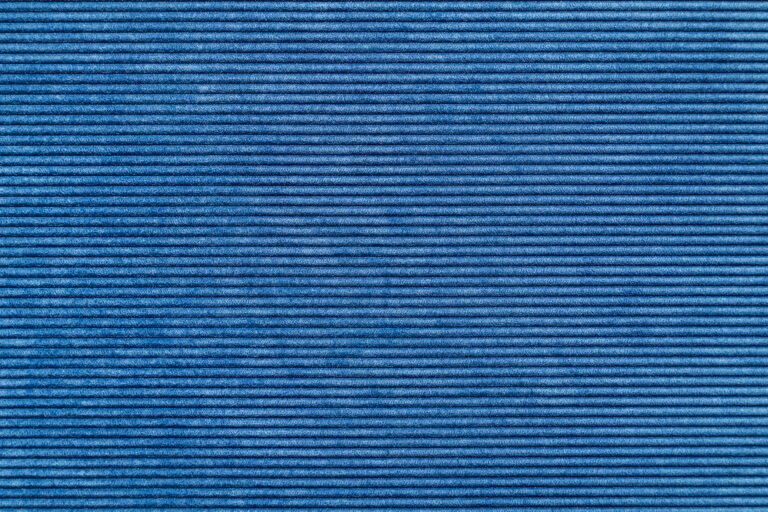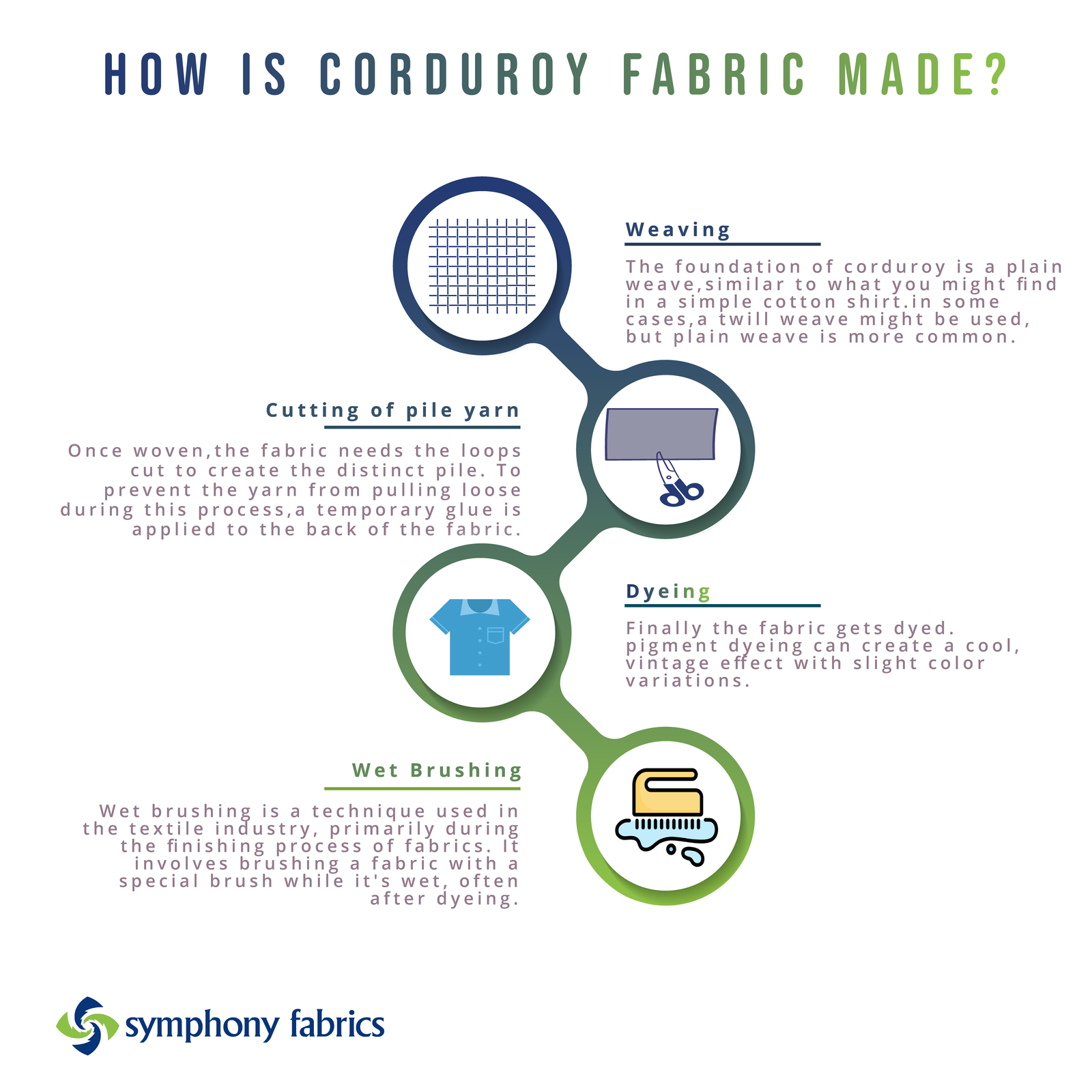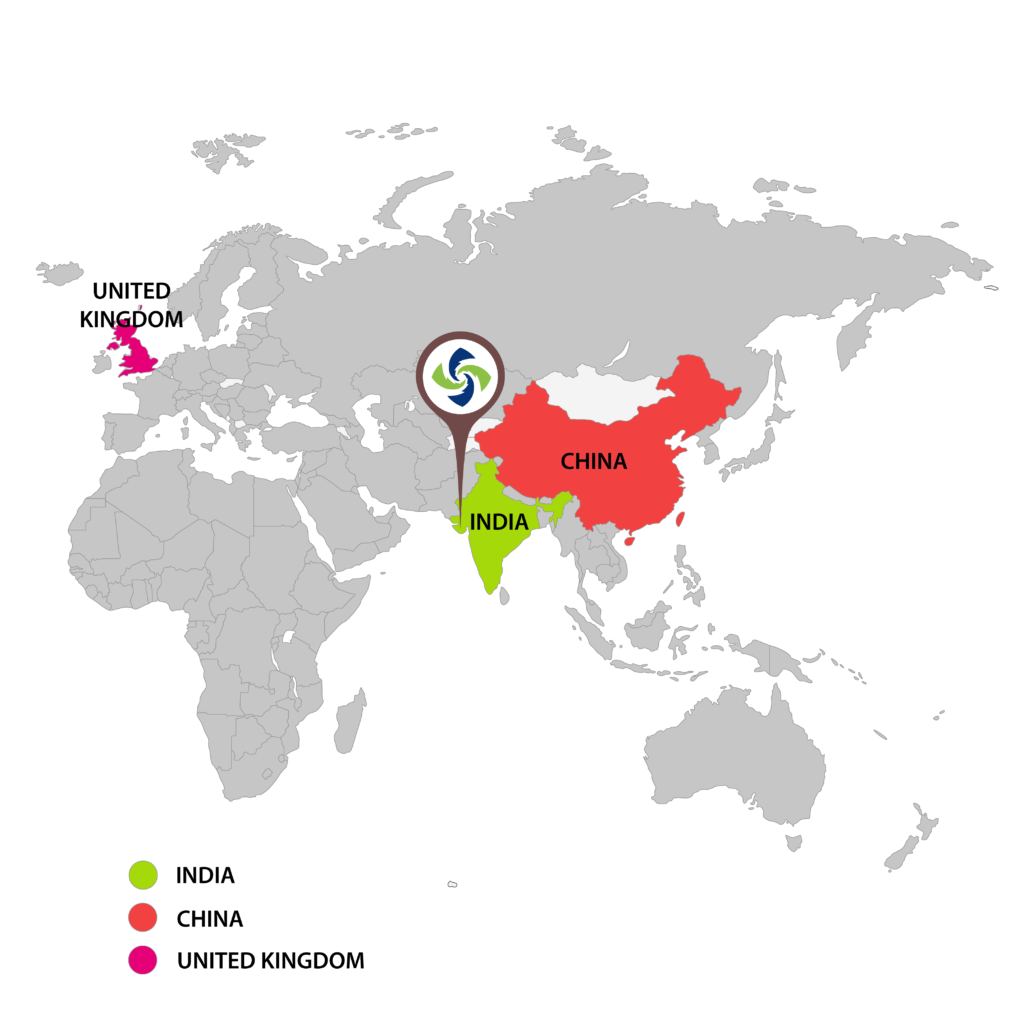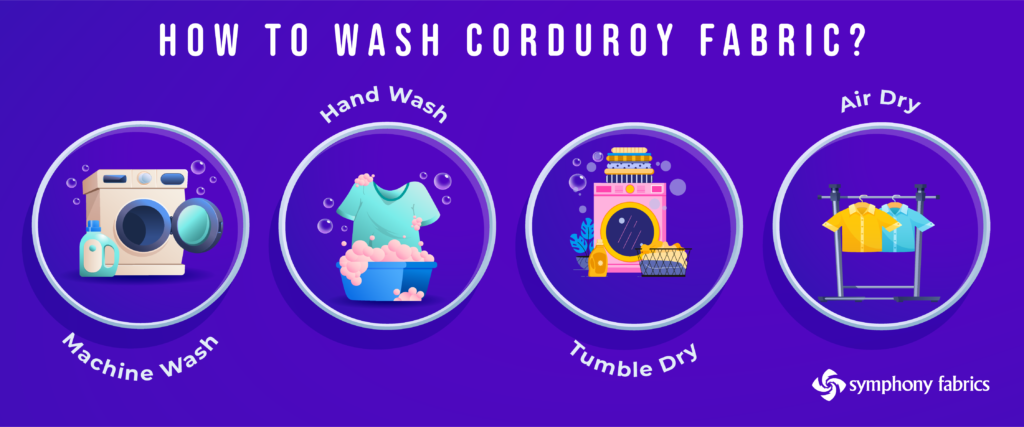What is Corduroy Fabric? : Types of Corduroy Fabric

Corduroy, a fabric featuring a wale their, has been used in clothing, furniture, and accessories for decades. The name “corduroy” originated from the French word, “corde du roi” which translates to “cord of the king.” Owing to its strong quality and soft feel, it can be used in different wears and accessories, as well as home furnishings.
Types of Corduroy
Cotton Corduroy: They have the softness, breathability and durability of cotton, with hardly any of the drawbacks and they’re also very comfortable and cool.It is flexible clothing for both formal and informal occasion.
Polyester Corduroy: This synthetic option offers a more wrinkle-resistant and machine-washable alternative to cotton. However, it may not be as soft or breathable.
Velvet Corduroy: A luxurious variation with a denser pile, velvet corduroy is often used in upscale clothing and upholstery.
Needlecord: This fine-wale corduroy features narrow, closely spaced ridges, giving it a more refined appearance.
How Corduroy Fabric is Made?

As an exceptional cloth, corduroy comes about when numerous constituent materials are processed employing certain techniques of manufacture. Here’s a detailed explanation of how corduroy is made:
- The core of the particular appearance of Corduroy is weaving that have extra yarn incorporated. Three sets of yarns are involved: three of which use weft or warp functions, whereas the last one adds loops on the fabric top. These loops are then cut side-ways to generate these cords, referred to as wales or ribs, and the fabric might also be dyed to achieve a distinctive appearance.
Where is Corduroy Fabric Produced?

While the concept of ribbed fabric might go back to ancient Egypt, modern corduroy as we know it emerged in 18th century England. Today, the biggest producers of corduroy fabric are:
- India: India is a close competitor to China, making them a major player in the global corduroy market. In India Symphony Fabrics are Big Corduroy Fabric Manufacturer in India
- China: China is the world’s leading textile producer, so it’s no surprise they’re also the top dog in corduroy production.
There’s also a lesser extent of production in:
- United Kingdom: The birthplace of modern corduroy still has a small share in the overall production.
Corduroy Fabric in Different Regions:
- Corduroy Fabric UK: The UK has a long history of textile production, and corduroy is a popular choice for traditional clothing and home decor.
- Corduroy Fabric Australia: Australia’s mild climate makes corduroy a versatile option for both winter and summer wear.
- Corduroy Fabric for Summer: While corduroy is often associated with colder weather, it can also be a comfortable choice for summer. Opt for lighter-weight cotton corduroy and styles with shorter sleeves or legs.
How Does Corduroy Fabric Impact The Environment?
The corduroy fabric, so traditional and so touching with its velvety wales, may sound like a breeze for the environment. The kind of fibers used in its construction determine its impact mention it the next sentence.
Not-So-Sustainable Sides:
- Synthetic Woes: The blowing up of corduroy from polyester or nylon definitely deserves to be the main villain. Manufacturing these petrochemical-driven fibers is very reliant on fossil fuels and emits toxic chemicals. Besides, these materials are not subjected to biodegradation and shed the microplastics that contaminate water surfaces.
- Cotton Concerns: Cotton can hardly be considered a pristine crop, even natural type may have a sinister face. Cotton farming has to use excessive amount of waterr while being heavily dependent on the use of pesticides and fertilisers and as a result it worsens the soil quality and ecosystems.
Corduroy on the Bright Side:
- Power of Organic Cotton: The corduroy that is made out of organicly grown cotton standas clearer ecological option. Organic farming procedures do no harm to the environmental by banning harmful chemicals, increasing the diversity and hence overall using less water.
- Wool Winner: Surprisingly, corduroy made of wool fiber is not merely an eco-friendly choice, but one that indeed makes sense also. Sheep are living as two-dimensional being because their main purpose is to give wool. The wool is not plastic it’s natural and biodegradable.
Making Your Corduroy More Eco-Friendly:
- Seek Out Sustainable Certifications: Eco-friendly products are getting popular day by day and you can choose products having labels such as GOTS (Global Organic Textile Standard) or OEKO-TEX.
- Love What You Have: Characteristically, corduroy fabric is on strength, even with constant abrasion force. That brings you corduroy clothes a good deal of satisfaction. They excel in the tearing effect, and you won’t have to spend all the time on re-buying constantly.
What Corduroy Fabric Certifications Are Available?
Corduroy thanks to its velvety feel and evergreen pattern is a highly favored fabric for clothing fashion including the house wear sector. Before the corduroy choice, you are thinking about the other concerns besides designs like the ethical value and green effect. This is where fabric certifications come in, which dictates the manufacturing methods, environmental impact of production, and social standards of the fabric workers.
Here’s a breakdown of corduroy certifications you might encounter:
Sustainability Certifications:
- GOTS (Global Organic Textile Standard): This certification guarantees that the chemicals used in the fabrication of the organic fiber crops (mostly cotton) meet very high standards of the environment, and also that of the workers.
- OCS(Organic Content Standard): An OCS, or Organic Content Standard, certificate verifies the presence and amount of organic material in a fabric.
- BCI(Better Cotton Initiative): The BCI certification, which stands for Better Cotton Initiative, applies to cotton fabric, not the fabric itself.
What is Pinwale Corduroy Fabric?
Pinwale Corduroy:
Pinwale corduroy is an old world charmer famous for thin cord and close cord spacing. Think of wales like pinstripes on corduroy that are only a few millimeters in width. Here’s a breakdown of its key characteristics:Here’s a breakdown of its key characteristics:
- Fine wales: The most wales (ridges) per millimeter, more than 21 to be precise, are seen on the pinwale, which is the most common type of corduroy.
- Soft and lightweight: The wale (the small looped row of fabric on a corduroy textile) pinwale corduroy has very thin dimensions as well as a less stiff, lighter feeling when compared to other types of cords.
- Drapes well: Its distinctive feature of “softness and lightweight” is the reason why pinwale corduroy is very much suitable for outfits such as tops, dresses and skirts that requires more versatile draping.
- Durable: Besides quality that makes welts of this fabric so desirable, the pinnwale corduroy is known for its durability that is true not only to this type of fabric but to the whole Corduroy kind.
- Hypoallergenic: Such light-weight textile is commonly made of cotton, and it suits people with delicate skin.
Corduroy Fabric is for Summer or Winter?
Corduroy can actually be worn in both summer and winter!
Winter: Corduroy is traditionally known for being a winter fabric. The thick, raised cords trap heat, making it a great insulator for colder weather. You’ll often see corduroy jackets, pants, and even skirts during the winter months.
Summer: However, corduroy can also be suitable for summer, especially if it’s made from lighter weight materials like cotton or a cotton blend. Lighter weight corduroy can be breathable and comfortable in warmer temperatures. Look for things like corduroy shirts, dresses, or even shorts made from these lighter fabrics.
How to Wash Corduroy Fabric?

Before Washing:
- Check the Care Label: This is always the best first step. The care label will tell you if the corduroy garment is machine washable, hand-wash only, or needs dry cleaning.
- Turn it Inside Out: This protects the corduroy’s nap (the raised fuzzy surface) from abrasion and helps prevent matting.
- Separate Colors: Wash dark colors with darks and light colors with lights to avoid dye bleeding.
- Pre-treat Stains: Treat any stains before washing according to the stain removal guide for the specific type of stain.
Washing:
- Machine Wash (if care label allows):
- Use a gentle or delicate cycle with cold water for dark colors and warm water for light colors (unless otherwise instructed on the label).
- Use a mild detergent suitable for delicates.
- Avoid overloading the washing machine – this can cause excessive wear on the corduroy.
- Hand Wash (if care label recommends):
- Use cool or lukewarm water and a mild detergent.
- Gently agitate the garment, but avoid scrubbing or wringing it.
Drying:
- Tumble Dry (low heat, if care label allows):
- Use the lowest heat setting possible to minimize shrinkage and damage to the nap.
- Remove the corduroy while it’s still slightly damp to prevent wrinkles.
- Air Dry:
- Hang the garment on a clothesline or drying rack to air dry completely. This is the safest option to avoid damaging the nap.
- What is Corduroy Fabric? : Types of Corduroy Fabric


